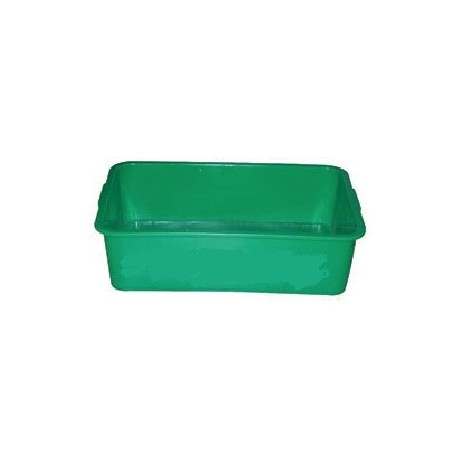Comparing Spain's pig production with that of other EU member states, we notice that while Spanish production grows and grows, in all other EU countries it remains stable or decreases.
In this article we will give our two cents on some of the causes that explain this unstoppable and fantastic progression.

Background
Before Spain became an EU Member State, the pork trade was considered State trading, i.e. the State controlled imports and exports by granting licenses and quotas to selected operators.
The Spanish State dealt with these matters through FORPA (Fund for the Order and Regulation of Agricultural Products). This body came to an end with the incorporation of Spain into the EU and the subsequent harmonization of agricultural policy. Let us say - gently - in the end, FORPA was an excessively bureaucratized entity.
In reality, Spain used to function as an autarchy, with the objective of self-sufficiency.
Years prior to becoming an EU Member State
With Spain being an autarchic market, by definition it should have been self-sufficient. But the reality was that there would be a surplus of pork in the winter (more production, absence of tourists) and a shortage in the summer (heat slows down the animals, as we know). This reality caused huge market fluctuations. Prices would go down in the winter and in the summer they would be systematically expensive.
Winters are much longer than summers, and the ruinous prices caused the most inefficient farmers to abandon their farms. This was the origin of the integrations: the less efficient farmers became integrated- employees of the integrator.
This system allowed some large companies to grow with hardly any capital tied up; if the market were to become very negative, they could have simply not renewed their contracts and left the industry, scot-free.
The persistence of adverse market situations ('70s and '80s) hardened the Spanish pig farmers, while instilling in them (necessity obliges) a sense of saving and efficiency above all else.
When Spain joined the European Union, the Spanish swine industry had long since completed its own reconversion. Only the most efficient farmers had survived; some of them transformed into the largest farmers in Europe. Spanish farmers were more than ready for the new challenge.
General Franco and the cooperatives
Under the dictatorship of General Franco, the State did nothing to support the development of cooperatives. While it is true that it did not prohibit them, it did not encourage any creation of new cooperatives nor did it facilitate the life of those that survived the civil war.
The reason is very simple (we think): in every cooperative at least one annual assembly must be scheduled to approve the balance sheets. In most cases, a quasi-holiday is scheduled with leisure activities. And, naturally, a fraternal meal is scheduled on the day's agenda.

A fraternal meal at the expense of the cooperative and attendees whose daily lives overflowed with hardships and limitations: a cocktail that could easily turn into more than just having a few drinks and lead to talking about this and that and... about politics!
At the highest levels it was decided that it was better not to promote cooperatives; not to prohibit them, but not to promote them.
This is, in our opinion, the reason why the Spanish pork sector has an absence of cooperatives (except for a few extraordinary exceptions).
The field of pig production was almost 100% open for private initiative.
Slaughterhouses and cutting plants
The processing industry that transforms live pigs into pork and cuts fit for consumption developed from the small butcher who slaughtered in his backyard to the industrial slaughterhouses (slaughterhouses attached to cured products manufacturing industries) and the general refrigerated slaughterhouses, precursors of today's powerful industry.
In the late 1970s and early 1980s, the largest slaughterhouse in Spain slaughtered and butchered some 10,000 animals a week. Today there are a few slaughterhouses that process more than that in a single day.
Meat industrialists forged ahead in a market that was oversaturated for most of the year. This meant that their sense of saving, efficiency, and fighting in hostile environments (key elements of excellence) was exacerbated to levels close to paroxysm. This was the seed of today's lush and fertile tree.
In the 1980s, we had the opportunity to compare the profit and loss accounts of slaughterhouses and cutting plants (of comparable size) in France (Brittany), Denmark (Jutland), and Spain (Catalonia).
At that time, each industry needed to allocate the following percentage of its turnover to pay for its raw material (pigs):
- Danish industry - 55% of its sales.
- Breton industry - 74% of its sales.
- Catalan industry - 82% of its sales.
This means that the company had to run off of the rest (pay the personnel, cover the maintenance, invest in R&D, make profits, etc.).
Already at that time, Spanish slaughterhouses and plants were extremely competitive, probably without being very aware of it. We were all still in an autonomous market, closed in on itself.
In the 1990s, refrigerated cutting began to be introduced. Today, all the cutting is done post airing, with a few insignificant exceptions.
Spain becomes a full member of the European Union
For practical purposes, Spain became a Member State of the European Union on March 1, 1986. Due to the persistence of ASF in the Spanish territory, the accession treaty opened up the import of pork while prohibiting its export. The crisis was at hand.
The eradication of ASF was achieved and the Spanish pork industry could start exporting on May 15, 1989. That date should be written in gold letters in each and every Spanish slaughterhouse. The eradication of ASF is one of Spain's greatest sanitary achievements; something seemingly impossible was accomplished. We should eternally congratulate the protagonists responsible for that achievement.
Access to the free market made further growth possible.
Causes of the Spanish swine sector's global excellence
From the above, we can infer that the causes of the undeniable success of Spanish pig farming are as follows:
- The undisputed efficiency of the slaughterhouses and plants, which bring the pork to the world. For us, this is the cornerstone of the whole building. Having comparatively less overhead allows them to pay more for the pigs (which stimulates growth: if the farmer makes money then he or she will grow).
- The professionalism of the producers; their extreme competitiveness regardless of their size (forged in a thousand battles).
- EU membership that facilitated our access to international markets.
- The maturity of both subsectors (production and industrialization) at the time of joining the EU, which allowed them to compete on equal terms with other international operators.
Guillem Burset






